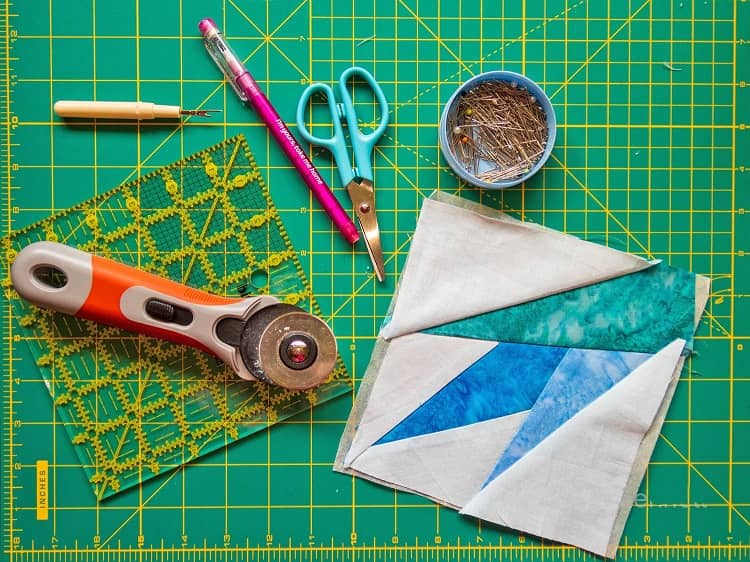A rotary cutting tool is used by sewers and quilters to cut fabric. It gets its name from the sharp round blade that rotates at the end of its handle. There are many different sizes of blades to pick form depending on your specific needs and wants. With the right blade and proper technique, you can save time and introduce some new skills into your sewing and quilting.
It seems simple enough, right? Here are 11 of the best tips and tricks for getting that perfect cut when using a rotary blade:

- Rotary blades are sharp and can be dangerous if not handled properly. Keep this in mind as you get in the habit of always putting the safety cover back over the blade every time you set it down.
- Be sure the blade has been attached properly. As you roll the blade, it should be smooth and effortless with no wiggling.
- Always cut away from your body.
- It is important to start with a sharp, clean blade. Keep a supply of replacement blades so you never need to worry about dull or nicked blades that can ruin your fabric or cut you.
- To help your blades last longer, avoid cutting anything other than textile fabric. Using your blades to cut material such as cardboard or paper can dull the blade fast. You should also carefully wipe off your blade after every use.
- Size matters. Rotary blades come in sizes ranging from 18mm to 60mm. A larger blade works best when you are cutting thicker fabric. But when you are cutting around curved templates, using a smaller blade is more efficient. A 45mm blade is a great all-purpose blade when starting out.
- Keep even pressure on the blade handle as you cut. Don’t press too hard or too light. Practice with some spare fabric before you go straight into your project.
- Use a ruler for measuring fabric and as a guide for cutting straight lines. Do not simply rely on the lines on your cutting mat. Again, practice with the ruler as it is easy for the ruler to slip or for your blade to cut underneath the ruler instead of next to it.
- Use your fingertips instead of placing your whole palm on the ruler to hold the ruler down and reduce slippage.
- Turn the mat, not the fabric itself if you need to turn to make a new cut.
- Stop rolling the blade as you reposition your hands when cutting a long strip. Do not try to keep the blade moving if you need to move your hands down the ruler.
Read More: